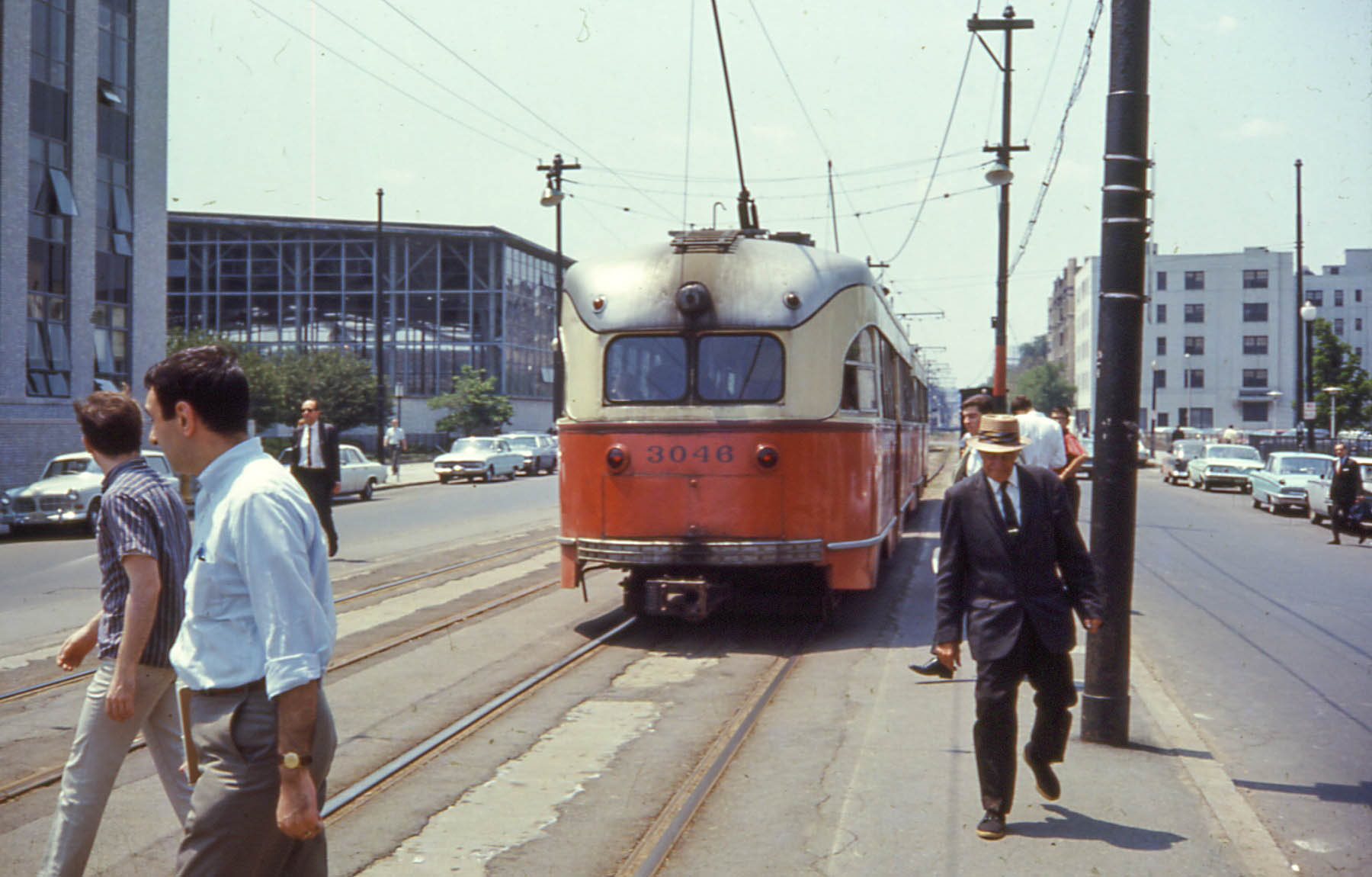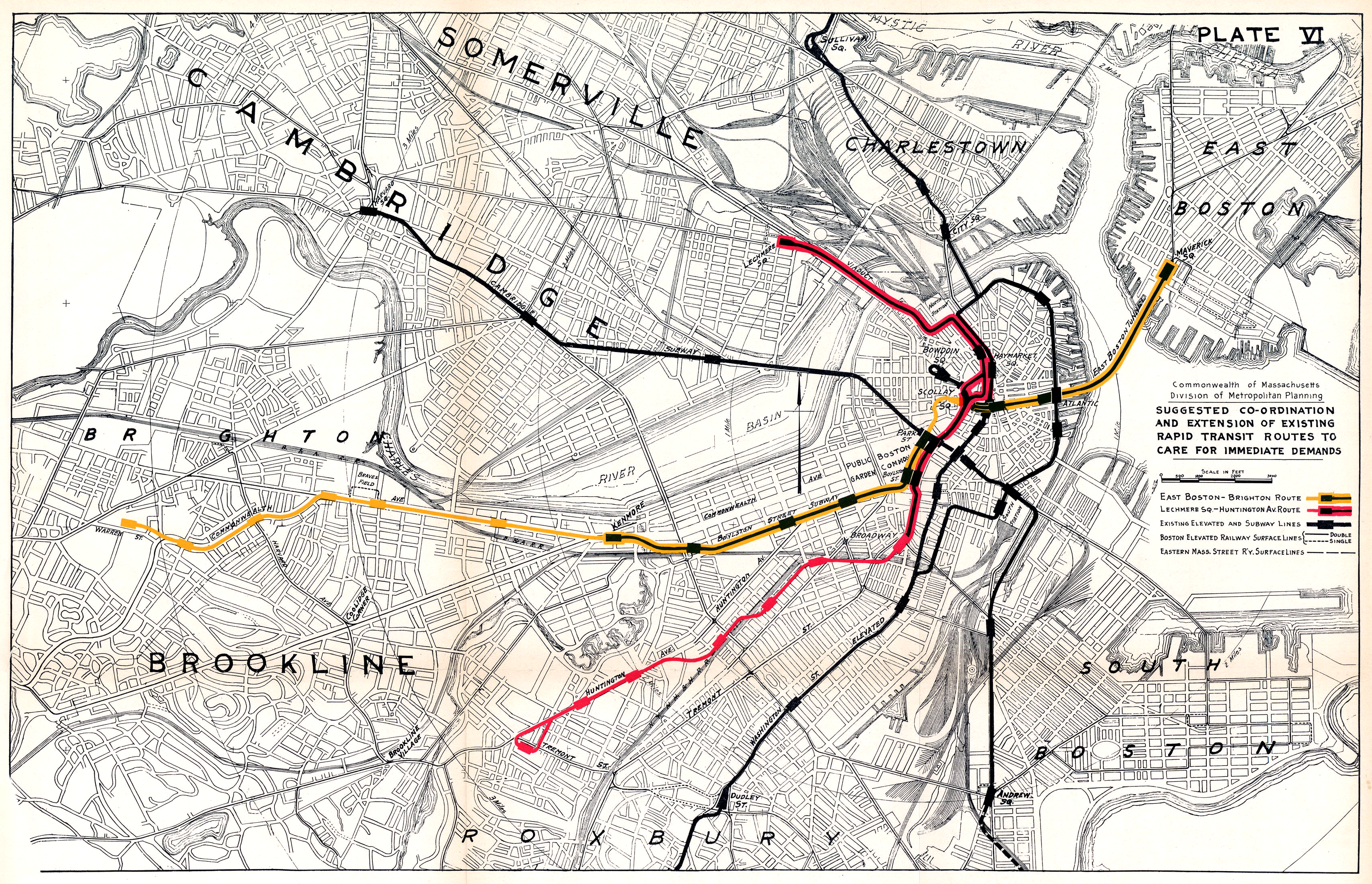|
Northeastern (MBTA Station)
Northeastern University station (signed as Northeastern) is a surface-level Rapid transit, trolley stop on the Green Line (MBTA), MBTA Green Line. It is located in a dedicated median along Huntington Avenue in Boston, between Opera Place and Forsyth Street, and is adjacent to the Krentzman Quad on the campus of Northeastern University (Boston, Massachusetts), Northeastern University. It is the first surface-level stop going outbound along the Green Line E branch; trolleys rise from a portal located between Opera Place and Gainsborough Street and continue along the surface down Huntington Avenue (Boston), Huntington Avenue towards Mission Hill, Boston, Massachusetts, Mission Hill. History Until the completion of the Huntington Avenue subway from to a portal near Opera Place on February 16, 1941, streetcars ran on the surface from the Boylston Street portal. With the completion of the tunnel, Opera Place became an important short turn location; a siding was constructed adja ... [...More Info...] [...Related Items...] OR: [Wikipedia] [Google] [Baidu] |
Huntington Avenue (Boston)
Huntington Avenue is a thoroughfare in the city of Boston, Massachusetts, beginning at Copley Square and continuing west through the Back Bay, Fenway, Longwood, and Mission Hill neighborhoods. It is signed as Massachusetts Route 9 (formerly Route C9). A section of Huntington Avenue has been officially designated the Avenue of the Arts by the city of Boston. Description In the Back Bay neighborhood, the avenue is primarily dominated by the Mother Church and headquarters of the Church of Christ, Scientist, and the buildings of the Prudential Center shopping and office complex. The middle portion of Huntington Avenue designated the "Avenue of the Arts" is lined by many significant artistic venues and educational institutions in Boston, including Symphony Hall, Horticultural Hall, the New England Conservatory, Northeastern University, the Huntington Avenue Theatre (Huntington Theatre Company's mainstage), the Museum of Fine Arts, Wentworth Institute of Technology, and ... [...More Info...] [...Related Items...] OR: [Wikipedia] [Google] [Baidu] |
Boston Elevated Railway
The Boston Elevated Railway (BERy) was a Tram, streetcar and rapid transit railroad operated on, above, and below, the streets of Boston, Massachusetts and surrounding communities. Founded in 1894, it eventually acquired the West End Street Railway via lease and merger to become the city's primary mass transit provider. Its modern successor is the state-run Massachusetts Bay Transportation Authority (MBTA), which continues to operate in part on infrastructure developed by BERy and its predecessors. History Originally intended to build a short electric Light rail, trolley line to Brookline, the West End Street Railway was organized in 1887. By the next year it had consolidated ownership of a number of Horsecar, horse-drawn streetcar lines, composing a fleet of 7,816 horses and 1,480 rail vehicles. As the system grew, a switch to underground pulled-cable propulsion (modeled after the San Francisco cable car system) was contemplated. After visiting Frank J. Sprague, Frank Spr ... [...More Info...] [...Related Items...] OR: [Wikipedia] [Google] [Baidu] |
Railway Stations In Boston
Rail transport (also known as train transport) is a means of transport using wheeled vehicles running in tracks, which usually consist of two parallel steel rails. Rail transport is one of the two primary means of land transport, next to road transport. It is used for about 8% of passenger and freight transport globally, thanks to its energy efficiency and potentially high speed.Rolling stock on rails generally encounters lower frictional resistance than rubber-tyred road vehicles, allowing rail cars to be coupled into longer trains. Power is usually provided by diesel or electric locomotives. While railway transport is capital-intensive and less flexible than road transport, it can carry heavy loads of passengers and cargo with greater energy efficiency and safety. Precursors of railways driven by human or animal power have existed since antiquity, but modern rail transport began with the invention of the steam locomotive in the United Kingdom at the beginning of the 19th ... [...More Info...] [...Related Items...] OR: [Wikipedia] [Google] [Baidu] |
Green Line (MBTA) Stations
Green Line may refer to: Places Military and political * Green Line (France), the German occupation line in France during World War II * Green Line (Israel), the 1949 armistice line established between Israel and its neighbours ** City Line (Jerusalem), part of the Green Line between Israel and Jordan which divided Jerusalem from 1948 and 1967 * Green Line (Lebanon), demarcation line between Christian and Muslim militias in Beirut during the Lebanese Civil War * Green Line, part of the United Nations Buffer Zone in Cyprus that runs through Nicosia and a colloquial name for the buffer zone as a whole * Green Line, part of the GHQ Line defence works built in the United Kingdom during World War II * Gothic Line, a German defensive line in Italy built during World War II, renamed the "Green Line" in June 1944 Other * Green Line (Atlanta development corridor), a development corridor in Downtown Atlanta * The cities of Virginia Beach, Virginia, and Chico, California each have ... [...More Info...] [...Related Items...] OR: [Wikipedia] [Google] [Baidu] |
Low-floor Tram
A low-floor tram is a tram that has no steps between one or more entrances and part or all of the passenger cabin. The low-floor design improves the accessibility of the tram for the public, and also may provide larger windows and more airspace. A low-floor tram allows accessible level access from curb (road), curb level platforms. Level access can also be achieved either by using a high-floor vehicle serving high-platform stops. Currently both types are in use, depending on the station platform infrastructure in existing rail systems. Some systems may make use of former railway alignments where use of existing high platforms is desirable, while others, particularly new systems, may not have the space to site high-level platforms in urban centres. Low-floor tram configurations Trams traditionally had high floors, and articulated tram designs evolved with low-floor centre sections. Examples of this design are Trams in Amsterdam, Amsterdam 11G/12G-trams and the Kusttrams in Belgium ... [...More Info...] [...Related Items...] OR: [Wikipedia] [Google] [Baidu] |
Brigham Circle Station
Brigham Circle station is a station on the light rail MBTA Green Line "E" branch, located just east of Brigham Circle in the Mission Hill neighborhood of Boston, Massachusetts. With raised platforms installed in a 2001-03 renovation, the station is accessible when served by low-floor streetcars. The two side platforms are staggered, with the outbound platform further west. Crosswalks across Huntington Avenue to the station are present at Brigham Circle (to the outbound platform), between the two platforms, and at Wigglesworth Street (to the inbound platform). East of Brigham Circle, the E branch runs in a dedicated reservation in the median of Huntington Avenue; west of the circle is street running A street running train is a train which runs on a track built on public streets. The rails are embedded in the roadway, and the train shares the street with other users, such as pedestrians, cars and cyclists, thus often being referred to as ru ... in mixed traffic to the term ... [...More Info...] [...Related Items...] OR: [Wikipedia] [Google] [Baidu] |
Northeastern University
Northeastern University (NU or NEU) is a private university, private research university with its main campus in Boston, Massachusetts, United States. It was founded by the Boston Young Men's Christian Association in 1898 as an all-male institute before being incorporated as Northeastern College in 1916, gaining university status in 1922. With more than 38,000 students, Northeastern is the largest university in Massachusetts by enrollment. It is a large, highly residential university which is composed of ten colleges, including the Northeastern University School of Law. The university's main campus in Boston is located within the center of the city along Huntington Avenue and Columbus Avenue (Boston), Columbus Avenue near the Fenway–Kenmore and Roxbury, Boston, Roxbury neighborhoods. It offers undergraduate and graduate programs, and most undergraduates participate in a cooperative education program. Northeastern is accredited by the New England Commission of Higher Educatio ... [...More Info...] [...Related Items...] OR: [Wikipedia] [Google] [Baidu] |
Short Turn
In public transport, a short turn, short working or turn-back is a service on a bus route or rail line that does not operate along the full length of the route. Short turn trips are often scheduled and published in a Public transport timetable, timetable, but they may also be unscheduled. Public transport operators use short turns for a variety of reasons, including delays, infrastructure limitations, and uneven passenger demand. Short turn services often require additional infrastructure to turn vehicles around in the middle of a route. Short turn bus services may not require any infrastructure, using streets to turn around. In comparison, short turn Tram, tram or streetcar services may have to use a balloon loop, limiting the locations for short turns. Rail services such as rapid transit and commuter rail have similar limits with short turn locations: they need Railroad switch#Crossover, crossovers, loops, or other special tracks when they short turn. Purposes Demand for serv ... [...More Info...] [...Related Items...] OR: [Wikipedia] [Google] [Baidu] |
Side Platform
A side platform (also known as a marginal platform or a single-face platform) is a platform positioned to the side of one or more railway tracks or guideways at a railway station, tram stop, or transitway. A station having dual side platforms, one for each direction of travel, is the basic design used for double-track railway lines (as opposed to, for instance, the island platform where a single platform lies between the tracks). Side platforms may result in a wider overall footprint for the station compared with an island platform, where a single width of platform can be shared by riders using either track. In some stations, the two side platforms are connected by a footbridge or tunnel to allow safe access to the alternate platform. While a pair of side platforms is often provided on a dual-track line, a single side platform is usually sufficient (trains are usually only boarded from one side) for a single-track line. Layout Where the station is close to a level crossing (g ... [...More Info...] [...Related Items...] OR: [Wikipedia] [Google] [Baidu] |
Huntington Avenue Subway
The E branch (also referred to as the Huntington Avenue branch, or formerly as the Arborway Line) is a light rail line in Boston, Cambridge, Medford, and Somerville, Massachusetts, operating as part of the Massachusetts Bay Transportation Authority (MBTA) Green Line. The line runs in mixed traffic on South Huntington Avenue and Huntington Avenue between and (the last MBTA street-running tracks in revenue service), in the median of Huntington Avenue to , then into the Huntington Avenue subway. The line merges into the Boylston Street subway just west of , running to via the Tremont Street subway. It then follows the Lechmere Viaduct to , then the Medford Branch to . , service operates on eight-minute headways at weekday peak hours and eight to nine-minute headways at other times, using 13 to 17 trains (26 to 34 light rail vehicles). Horsecar service on Centre and South streets in Jamaica Plain began in 1857, followed by service on Tremont Street (part of which became the w ... [...More Info...] [...Related Items...] OR: [Wikipedia] [Google] [Baidu] |





